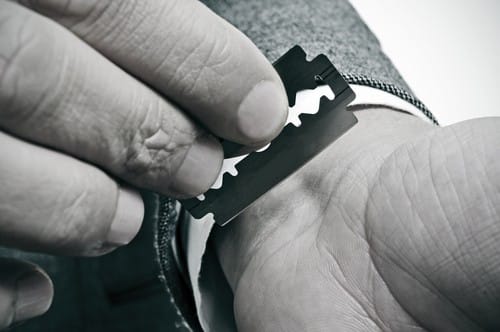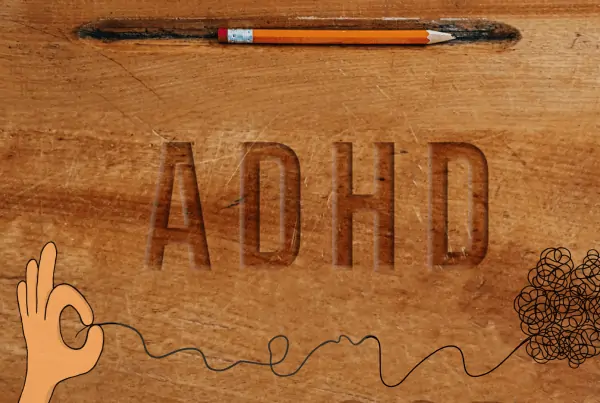Mental illnesses in teens can be a complicated topic for parents, especially if they have no personal experience with mental disorders. Recognizing and separating symptoms of a mental disorder from regular teenage behavior can be difficult, because many mental health symptoms are subtle, and begin in ways that can be misconstrued as normal teenage behavior.
Nevertheless, recognizing and identifying these symptoms is important. Teens themselves may lack the awareness or the experience to identify their feelings as troublesome and might instead internalize their symptoms as being their own fault.
This guilt can feed and accelerate feelings of anxiety, depression, or other symptoms, and can make treatment more difficult over time. Pressure at home or at school, a history of victimization, or mental health stigma in the community can complicate things even further, making teens less likely to seek help or consider asking for it.
Mental Illnesses in Teens Have Gone Up
The rates at which mental illnesses in teens have also gone up over time. Some of it may stem from awareness, or from societal factors, such as environmental concerns, greater academic pressure, and a poor economic outlook. But by and large, teen stressors are the same as they have always been: relationship problems, grades, fitting in, family environment, and trauma.
Let’s look at a few common yet sneaky mental illnesses that may affect your teen and how to identify them.
1. Body Dysmorphia
Body dysmorphia is a growing issue with the prevalence of social media and doctored Instagram posts, even amid waves of body positivity and messages about self-acceptance.
Also dubbed body dysmorphic disorder, this mental health condition is characterized by an untrue self-image. It isn’t just that a teen with BDD does not like the way they look – in their eyes, they look completely different than what they might look like to others. A teen with BDD might starve themselves or work out excessively to try and conform to their ideal, unattainable self-image. Teens with body dysmorphia may also abuse substances to suppress their appetite or achieve a different figure, such as using anabolic steroids to build muscle quickly. Signs and symptoms of BDD include:
- An excessive and extreme focus on physical appearance and repeated negative comments about their self-image.
- Spending inordinate amounts of time checking and rechecking their appearance.
- Hiding away from others or hiding their body with loose-fitting clothes and baggy clothing.
- Not listening to affirmations from others, ignoring praise about their physical appearance/continuing to lament their appearance as ugly.
2. Eating Disorders
Eating disorders are often adjacent to body dysmorphia but are characterized primarily by an unhealthy relationship with food. Eating disorders are usually diagnosed as either binge eating disorder, anorexia, bulimia, avoidant restrictive food intake disorder, other specified eating disorders, or unspecified eating disorders.
Binge eating Disorder
Binge eating disorder is characterized by a cycle of emotional lows and depressive symptoms culminating in an unhealthy binge eating session, leading to another cycle of low mood. Teens who are binge eating may hide their binges, keep food in their room, or store chocolate bars and snacks in their drawers.
Anorexia Nervosa
Anorexia Nervosa is a disorder characterized by excessively restrictive calorie counting and starvation, including severe body image issues, such as seeing oneself as fat despite being dangerously underweight. Therefore, anorexia can be a life-threatening condition.
Bulima Nervosa
Bulimia nervosa is an eating disorder characterized by a cycle of self-starvation, binging, and purging behavior (through laxatives or self-induced vomiting). Frequent vomiting can also cause throat and dental damage, as well as create callouses on a teen’s index and middle finger knuckles.
Avoidant Restrictive Food Intake Disorder
Avoidant restrictive food intake disorder is characterized by an unhealthily restrictive food intake. Teens with avoidant restrictive food intake are incredibly picky about what they eat, to the point that it causes dramatic weight loss and physical health problems. These problems are progressive, meaning the list of acceptable foods becomes smaller over time. Teens with avoidant restrictive food intake are not necessarily worried about body image, but may be worried about choking on their food, or react nauseously to normal foods for no discernable reason. Choosing to cut out certain foods for health or moral reasons (such as a keto diet or veganism) is not a disorder.
Other Specific or Unspecified Eating Disorders
Other specific or unspecified eating disorders may be applied as a label to teens with disordered eating habits that do not yet fit an established profile, fit into multiple disorders at once, or in cases where more information is needed to determine a teen’s condition.
Eating disorders need to be addressed professionally. They can be life-threatening and can cause lasting physical harm.
3. Attention-Deficit/Hyperactivity Disorder
Attention-deficit/hyperactivity disorder or ADHD is a well-known condition in children and teens, but it can present itself in subtle ways that often evade diagnosis for years. Teens learn to cope with their ADHD symptoms over time, continuing to mask them well into adulthood.
However, untreated ADHD can be a great risk to teens because it is often associated with a much higher risk of comorbid mental health problems, including depression and substance use disorder.
One of the primary symptoms of teen ADHD is recurring disorganization. Being disorganized or clumsy is not just a personality trait – if your teen is consistently bad with time management, constantly misplaces their belongings, dodges, or misses deadlines all the time, and is actively anxious about these things (i.e., they are worried, and trying, but their behavior does not change), they may be struggling with ADHD.
Executive functioning problems are another common sign of ADHD in teens. Executive functioning refers to the ability to utilize one’s working memory, flexibility, and self-control to go about their life, including making and coordinating schedules and plans, prioritizing tasks effectively, demonstrating emotional control, effective self-monitoring, focusing on a task at a time, and being flexible about schedule changes.
Teens with ADHD can still learn to develop and hone these skills, but they may have a harder time doing so than their peers. Executive functioning can also be impacted by other problems, such as depression, abuse, or trauma.
4. Substance Use Disorder
Substance use disorder is another term for addiction. Addiction in teens may occur as a result of comorbid conditions, such as an anxiety disorder, PTSD, or depression, or as a result of a combination of environmental factors (socioeconomics, trouble at home, parental disconnect) and inner factors (genetics, family history, addiction at home).
Signs of a substance use disorder in teens can vary. Drug paraphernalia is one common sign, from hidden bongs to a bottle of vodka under the bed. Consistently coming home too late, coming home drunk or high multiple times, and experiencing physical symptoms of recurring drug use – from bloodshot eyes to memory loss – are also important signs.
When To Get Help
Mental illnesses in teens are treatable, and regardless of what your teen is going through, the first step of that treatment is compassion. Help your teen understand that you are in their corner and want them to feel better. They need to internalize that your goal isn’t to punish them, but to help.
In some cases, it can be difficult to convince your teen that you’re on their side. Some conditions make it harder to help teens get help than others, including addiction, personality disorders, and conduct disorders. Working with a mental health professional beforehand can help you come up with the best way to intervene on your teen’s behalf and get them to see things your way.
For more information, contact Visions Treatment Centers today.








